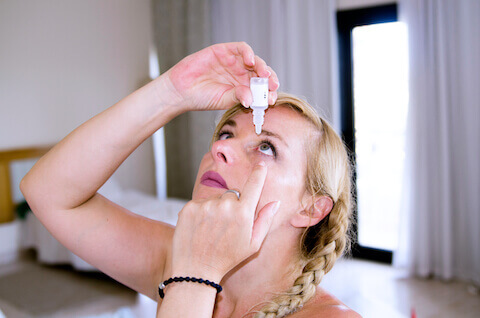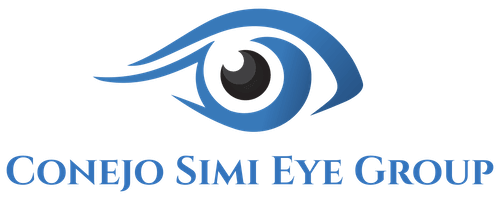
What Is Dry Eye?
Dry eye, more accurately referred to as Ocular Surface Disease (OSD), encompasses several conditions, the primary ones being Dry Eye Syndrome, Blepharitis (inflammation of the edge of the eyelids) and Ocular Allergy. It’s quite common for individuals to experience more than one of these conditions simultaneously. Symptoms often overlap and include:
- Redness
- Scratchiness
- Burning
- Itching
- Crusty eyelids
- Excessive tearing
- Mild discharge
- Light sensitivity
- Fluctuating vision
- Contact lens intolerance
- Swollen eyelids
Diagnosing these disorders accurately and finding effective treatment can be challenging, even for the best eye doctors. Often, treatment requires a trial-and-error approach as there is no universal remedy. The goal is to alleviate symptoms as much as possible since a cure is typically not achievable. Dr. Corwin is a long-term sufferer of OSD and has extensive experience in managing it.
How To Diagnose Ocular Surface Disease
Diagnosing OSD involves various tests which help identify the root cause of your symptoms:
- Flourescein and Lissamine Green Stains: Detect drying on the eye’s surface.
- Tear Volume: Measures tear production and evaporation rates.
- Tear Breakup Time: measures speed of tear evaporation
- Eyelid Examination: Assesses the edges of the lids looking for inflammation
- Eyelid palpation: assesses quality of secretions from eyelid oil glands (called Meibomian Glands)
- Allergy Testing: Conducted if an ocular allergy is suspected.
- Lipiview: computerized instrument that measures tear oil layer thickness, checks blinking patterns and analyzes the health of your lid oil glands
Dry Eye Syndrome
According to the American Academy of Ophthalmology, nearly 5 million Americans over age 50 suffer from dry eye syndrome. In Southern California, the incidence is higher due to the desert climate.
Causes of Dry Eye Syndrome
Dry eye syndrome is categorized into two types:
1. Aqueous Deficient Dry Eye: Inadequate production of tears.
2. Evaporative Dry Eye: Rapid evaporation of tears due to an insufficient oil layer, often caused by Meibomian Gland Dysfunction (MGD).
Aqueous Deficient Dry Eye
Causes include:
- Aging and Gender: more common in older women due to hormonal changes.
- Medications: both prescription and over-the-counter oral and eyedrops.
- Autoimmune Diseases: particularly Sjögren’s syndrome.
Evaporative Dry Eye
This is more prevalent and occurs due to:
Meibomian Gland Dysfunction (MGD) leading to inadequate oil production, causing rapid tear evaporation. Meibomian glands line the edges of your lids and the oil they produce prevents evaporation of tears
Treatment of Dry Eye Syndrome
Aqueous Deficient Dry Eye
Treatments include:
- Artificial Tear Eyedrops, Gels, or Ointments: Common but not always sufficient.
- Tyrvaya Nasal Spray: Stimulates the trigeminal nerve to produce tears, similar to the mechanism that causes tearing when smelling chopped onions.
- Punctual Plugs: Small devices placed in tear drains to reduce drainage and retain tears to increase tear volume in the eye.
Evaporative Dry Eye
Treatments focus on improving the oil layer and reduce evaporation:
- Omega-3 Fatty Acids such as fish oil or flaxseed oil taken orally
- Lid Scrubs
- Warm Compresses
- Low-Dose Oral Antibiotics such as Doxycycline
- Lipiflow: A painless 10-minute procedure to regenerate clogged meibomian glands if not irreversibly scarred.
- Meibomian gland probing: to open scarred glands and restore their function
Ocular Inflammation: The Common Denominator in Ocular Surface Disease
Regardless of the OSD cause, chronic inflammation of the eye’s surface is the primary source of symptoms. In addition to specific treatments just discussed, ongoing anti-inflammatory medication is often necessary. Prescription eyedrops options include:
- Restasis (generic: cyclosporine)
- Xiidra
- Cequa
- Cortisone
Some patients benefit greatly from “serum tears”, a custom medication derived from their own blood, concentrating the body’s natural anti-inflammatory agents into an eyedrop.
Conclusion
Effective management of Ocular Surface Disease requires accurate diagnosis and a tailored treatment plan, often involving a combination of strategies to reduce inflammation and improve tear production or retention. Ongoing care and adjustments are crucial for symptom relief and maintaining good vision.


